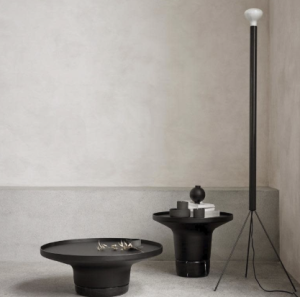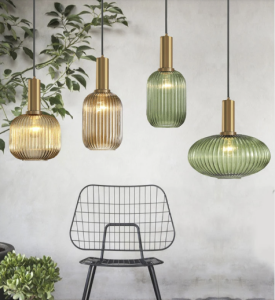When embarking on the journey of selecting the perfect furniture for your home, the first step is to carefully consider the space you have available. Each room in your home has its own unique dimensions, layout, and purpose, which can significantly influence your choices. Begin by measuring the area where you plan to place your furniture.
This includes not only the length and width of the space but also the height of the ceilings and any architectural features such as windows, doors, or built-in shelving. Understanding these spatial constraints will help you avoid the common pitfall of purchasing items that are either too large or too small for your environment. Additionally, take note of how natural light flows through the room at different times of the day, as this can affect the ambiance and functionality of your chosen pieces.
Beyond mere measurements, it’s essential to consider the overall flow and functionality of the space. Think about how you and your family use the room on a daily basis. Is it a high-traffic area where people gather frequently, or is it a more intimate setting meant for relaxation?Top5lamp
The arrangement of furniture should facilitate movement and interaction while also providing comfort. For instance, in a living room, you might want to create a conversational layout that encourages engagement among guests. In contrast, a home office may require a more structured setup that promotes focus and productivity.
By taking into account both the physical dimensions and the intended use of your space, you can make informed decisions that enhance both aesthetics and practicality.
Determine Your Style
Discovering Your Personal Style
Once you have a clear understanding of your space, the next step is to determine your personal style. Your home is a reflection of who you are, and the furniture you choose should resonate with your tastes and preferences. Start by exploring various design styles such as modern, traditional, eclectic, or minimalist.
Exploring Design Styles
Each style has its own distinct characteristics, colors, and materials that can evoke different feelings and atmospheres within a room. For example, modern design often emphasizes clean lines and neutral colors, while traditional styles may incorporate rich woods and ornate details. By identifying which style speaks to you, you can create a cohesive look that ties your entire home together.
Infusing Your Personality into Your Space
In addition to considering established design styles, think about how you can infuse your personality into your choices. This might involve selecting statement pieces that showcase your interests or incorporating artwork and decor that tell your story. Mixing and matching different styles can also be an effective way to create a unique aesthetic that feels authentic to you. For instance, pairing vintage furniture with contemporary accents can add depth and character to your space.
Finding a Balance
Ultimately, determining your style is about finding a balance between what you love and what works harmoniously within your home’s environment.
Think About Seating
Seating is one of the most critical components of any living space, as it directly impacts comfort and social interaction. When selecting seating options, consider not only the number of people you typically host but also their preferences for comfort and style. Sofas, chairs, and benches come in a myriad of designs, fabrics, and configurations, allowing you to tailor your choices to suit both aesthetic desires and functional needs.
For example, if you frequently entertain guests, a spacious sectional sofa may provide ample seating while fostering conversation. Alternatively, if your space is more intimate or used primarily for relaxation, a pair of cozy armchairs might be more appropriate. In addition to style and comfort, think about how seating arrangements can enhance the overall flow of the room.
Positioning chairs and sofas in a way that encourages interaction can create a welcoming atmosphere for gatherings. Consider incorporating versatile seating options such as ottomans or poufs that can be easily moved around to accommodate different group sizes or activities. Furthermore, don’t overlook the importance of scale; ensure that your seating choices are proportionate to the size of the room and other furniture pieces.
By thoughtfully considering seating options, you can create an inviting environment that invites both relaxation and socialization.
Material Matters
The materials used in furniture construction play a significant role in both aesthetics and durability. When selecting furniture for your home, it’s essential to consider not only how materials look but also how they will perform over time. Common materials include wood, metal, glass, and various fabrics, each offering distinct advantages and challenges.
For instance, hardwoods like oak or maple are known for their durability and timeless appeal but may require more maintenance than softer woods or engineered materials. On the other hand, metal furniture can provide a sleek modern look while being resistant to wear and tear. In addition to structural materials, consider the upholstery options available for soft furnishings like sofas and chairs.
Fabrics vary widely in terms of texture, colorfastness, and ease of cleaning. Natural fibers such as cotton or linen offer breathability but may stain more easily than synthetic options like polyester or microfiber. If you have pets or young children, opting for durable fabrics that resist stains and wear can be particularly beneficial.
Ultimately, choosing the right materials involves balancing aesthetics with practicality to ensure that your furniture not only looks great but also stands up to daily use.
Shape and Size
The shape and size of furniture pieces are crucial factors that can dramatically influence the overall feel of a room. When selecting items such as tables or sofas, consider how their shapes interact with one another and with the surrounding space. For example, round tables can create a softer look and facilitate conversation in dining areas, while rectangular tables may offer more surface area for larger gatherings.
Similarly, the shape of sofas—whether they are straight-lined or curved—can affect how people move through the space and interact with one another. Size is equally important; oversized furniture can overwhelm a small room while undersized pieces may feel lost in a larger area. To achieve balance, aim for proportionate sizing that complements both the dimensions of the room and other furnishings within it.
Additionally, consider how different shapes can influence functionality; modular furniture allows for flexibility in arrangement while multi-functional pieces like storage ottomans can maximize utility without sacrificing style. By thoughtfully considering shape and size in your furniture selections, you can create a harmonious environment that feels both inviting and well-planned.
Functionality
Functionality in Furniture: More Than Just Aesthetics
When choosing furniture for your home, functionality is a crucial aspect to consider. Each piece should serve a purpose beyond mere aesthetics; it should enhance your lifestyle and meet your specific needs. For instance, if you work from home frequently, investing in an ergonomic office chair and a spacious desk can significantly improve productivity and comfort during long hours spent at work.
Practical Solutions for a Clutter-Free Home
If you have children or pets, selecting furniture with built-in storage solutions can help keep clutter at bay while ensuring that everything has its designated place. This approach not only maintains a tidy environment but also promotes organization and efficiency. By incorporating storage solutions into your furniture, you can create a more streamlined and peaceful living space.
Adaptable Furniture for a Dynamic Lifestyle
Consider how different pieces can adapt to various activities throughout the day. A dining table that expands for family gatherings or a sofa bed that converts into a guest bed are excellent examples of multifunctional furniture that maximizes utility without compromising on style. This type of furniture allows you to make the most of your space and accommodate changing needs.
Integrating Technology for Enhanced Functionality
Additionally, consider how technology plays a role in functionality; many modern furniture designs incorporate features such as built-in charging stations or adjustable heights to accommodate changing needs. By prioritizing functionality in your selections, you can create a living space that is not only beautiful but also practical for everyday life.
Budget
Establishing a budget is an essential step in the furniture selection process that helps guide your choices without overspending. Begin by determining how much you are willing to invest in each piece of furniture based on its importance to your overall design vision and functionality needs. It’s wise to allocate funds according to priority; for example, investing more in high-use items like sofas or dining tables while opting for more affordable options for decorative accents or occasional chairs may be a practical approach.
While setting a budget is crucial, it’s equally important to remain flexible within those parameters. Research various brands and retailers to find quality options at different price points; sometimes spending slightly more on durable items can save money in the long run by reducing replacement costs due to wear and tear. Additionally, consider exploring second-hand shops or online marketplaces where unique finds may be available at lower prices.
By being strategic about budgeting while remaining open to various options, you can furnish your home beautifully without breaking the bank.
Maintenance and Care
Finally, understanding maintenance and care requirements is vital when selecting furniture for your home. Different materials require varying levels of upkeep; for instance, leather may need conditioning treatments to prevent cracking over time while wood surfaces often benefit from regular polishing to maintain their luster. Familiarizing yourself with these requirements before making purchases will help ensure that you choose items that fit seamlessly into your lifestyle without becoming burdensome.
Moreover, consider how easy it is to clean each piece of furniture; removable covers on sofas or chairs can simplify washing processes significantly compared to those with fixed upholstery. If you have children or pets in your household, opting for stain-resistant fabrics or finishes can save time and effort in maintaining cleanliness over time. By prioritizing maintenance considerations alongside aesthetics and functionality during your selection process, you can enjoy beautiful furnishings that remain in excellent condition for years to come.


